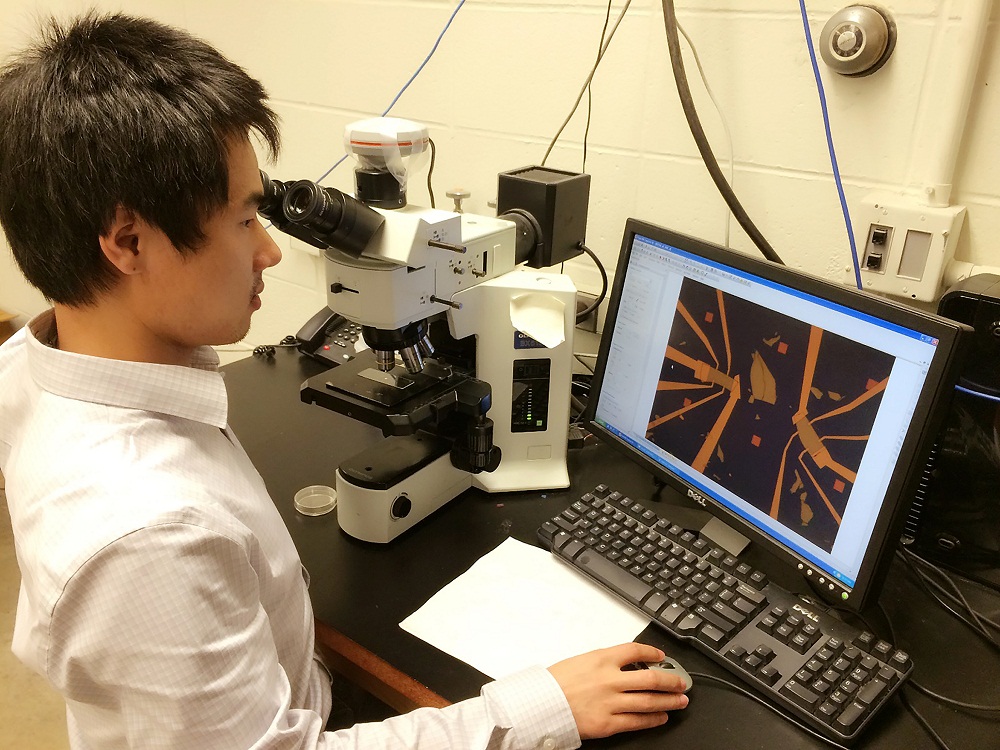ACADEMIA
Topological insulators promising for spintronics, quantum supercomputers

Researches have uncovered "smoking-gun" evidence to confirm the workings of an emerging class of materials that could make possible "spintronic" devices and practical quantum supercomputers far more powerful than today's technologies.
The materials are called "topological insulators." Unlike ordinary materials that are either insulators or conductors, topological insulators are in some sense both at the same time - they are insulators inside but always conduct electricity via the surface. Specifically, the researchers have reported the clearest demonstration of such seemingly paradoxical conducting properties and observed the "half integer quantum Hall effect" on the surface of a topological insulator.
"This is unambiguous smoking-gun evidence to confirm theoretical predictions for the conduction of electrons in these materials," said Purdue University doctoral student Yang Xu, lead author of a paper appearing this week in the journal Nature Physics.
Yong P. Chen, a Purdue associate professor of physics and astronomy and electrical and computer engineering, led a team of researchers from Purdue, Princeton University and the University of Texas at Austin in studying the bismuth-based material.
"This experimental system provides an excellent platform to pursue a plethora of exotic physics and novel device applications predicted for topological insulators," Chen said.
For example, by further combining topological insulators with a superconductor, which conducts electricity with no resistance, researchers may be able to build a practical quantum computer. Such a technology would perform calculations using the laws of quantum mechanics, making for supercomputers much faster than conventional computers at certain tasks such as database searches and code-breaking.
"One of the main problems with prototype quantum computers developed so far is that they are prone to errors," Chen said. "But if topologically protected, there is a mechanism to fundamentally suppress those errors, leading to a robust way to do quantum computing."
The topological insulators were synthesized at Purdue and fabricated into electrical devices at the Birck Nanotechnology Center in the university's Discovery Park.
The researchers for the first time demonstrated a three-dimensional material with an electrical resistance not dependent on the thickness of the material, a departure from conventional behavior. Whereas electrons usually have a mass, in the case of topological insulators the conducting electrons on the surface have no mass and are automatically "spin polarized," leading to the unique half-integer quantum Hall effect observed and also making the material promising for various potential applications.
Topological insulators could bring future supercomputing platforms based on "spintronics." Conventional computers use the presence and absence of electric charges to represent ones and zeroes in a binary code needed to carry out computations. Spintronics, however, uses the "spin state" of electrons to represent ones and zeros.
"Compounds based on bismuth, antimony, telluride and selenide are the cleanest and most intrinsic topological insulators demonstrated so far, with no measurable amount of undesirable conduction inside the bulk that often spoils the topological conduction properties in earlier topological insulator materials," Chen said.
The researchers also found evidence consistent with the conduction of electrons being "topologically protected," meaning its surface is guaranteed to be a robust conductor. Studying thin-slab-shaped samples cut from this material down to ever decreasing thickness while observing the conductance, the researchers found that the conductance - which occurs always and only at the surface - barely changes.
"For the thinnest samples, such topological conduction properties were even observed at room temperature, paving the way for practical applications," Xu said.
The paper was authored by Xu; Purdue research scientist Ireneusz Miotkowski, who created the high-quality materials; Princeton postdoctoral research associate Chang Liu; Purdue postdoctoral research associate Jifa Tian; UT Austin graduate student Hyoungdo Nam; Princeton graduate student Nasser Alidoust; Purdue graduate student Jiuning Hu; Chih-Kang Shih, Jane and Roland Blumberg Professor at UT Austin; M. Zahid Hasan, a Princeton professor of physics; and Chen.
In addition to the material growth and electrical measurements performed by the Purdue researchers, the Princeton and UT Austin groups contributed to this study by performing advanced characterizations that further confirmed important properties of the material as a topological insulator.
The research was funded by the Defense Advanced Research Projects Agency, which supports a Purdue-led program with participation from Princeton and other institutions aiming to develop energy efficient electronic devices based on topological insulators. The electrical measurements revealing the signature half-integer quantum Hall effect were performed at the National Science Foundation's National High Magnetic Field Laboratory. UT Austin's contribution to this study was supported the Welch Foundation and U.S. Army Research Office.

